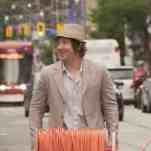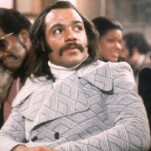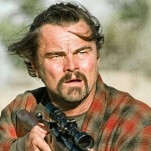Pop-culture holiday dinners suck for everybody, especially Buffy
Most of us are accomplished watchers of TV and film, so we intuitively understand some of the concepts lurking in dense film-theory tomes. You won’t need them for Internet Film School, The A.V. Club’s column about film and television. In each installment, we explore a basic element of visual composition and analyze examples to understand how the formal properties of film and television manipulate viewers.
Thanksgiving is a holiday that allows filmmakers to get back to the medium’s theatrical roots. No elaborate sets are required—just a table and some people who know each other so well they decided to come together once a year rather than interact regularly. It is a chance for film to scale back its visual ambitions and look like a play without stumbling into the stodgy stage direction of an old episode of Masterpiece Theatre. Only unlike those film adaptations of dramatic works, there is a natural quality to the limitations placed upon a film that happens on Thanksgiving. Everyone looks like they’re in the same place not because the theater couldn’t afford better sets, but because everyone is trapped in the same confined spaces by strained familial bonds. Because if ever there were a time and a place for families to fall apart, it’s Thanksgiving.
Families fall apart all the time—I consider “families falling apart” to be a genre, and Noah Baumbach the current king of it—but never as spectacularly as they do during Thanksgiving. Perhaps as alluded to above, it is because of the artificially pressurized atmosphere the holiday creates. People who don’t particularly like each other are yet again forced to make extended displays of false joviality in order to please the one family member who actually cares about everyone. Sometimes that character is a doting mother, sometimes a dying father, or in the case of the “Pangs” episode of Buffy: The Vampire Slayer, an empty-nested Chosen One whose surrogate family is on the brink of collapse.
The question any director must ask when given such a static narrative and limited canvas—it will have to involve certain activities, like cooking and eating, and it will have to revolve around a limited number of rooms, mostly the kitchen and dining room—is how to make something visually compelling out of activities that are so inherently boring. The incredible popularity of cooking shows is beside the point, because those are designed to make the audience want to taste exotic fare, whereas Thanksgiving films and episodes only remind people of what they already know. (Which is why, when people see fresh cranberry sauce and a beautifully roasted turkey on the Food Network’s annual Thanksgiving special, they start thinking about how incredible the pair will taste on a leftover sandwich.) How do directors do this?
They tighten up the world. Characters who don’t typically share the frame are jammed in three and four at a time. Even the typical two-shot—in which two characters share the same frame—becomes cluttered with holiday detritus:
Look how veteran television director Michael Lange frames this conversation between Buffy Summers and her former mentor and current surrogate father-figure Rupert Giles. They’re together in the same small room—made to seem even smaller by the decision to film it through the kitchen cut-out—and they’re separated by the very thing that ostensibly brings them together: the grocery bag full of Thanksgiving victuals. Not only are their postures stiff and annoyed, but that stiffness and annoyance is magnified by the placement of the stools directly beneath them on the camera side of the cut-out. They could be having this situation while comfortably seated, those stools inform the audience, but the pair is choosing to have this particular conversation in a more uncomfortable fashion.
Lange then cuts to a series of equally cluttered one-shots. How could they not be cluttered given the confines in which they’re shot? But because of how claustrophobic these medium close-ups are, instead of creating the impression that these characters are independent subjects sharing a scene, they become more like people being trapped by the scenery:
Sarah Michelle Gellar is not very tall, so the fact that Lange scalped her in this medium close-up must be deliberate. Giles is telling Buffy that her desire to throw an elaborate Thanksgiving dinner may be a classic case of overcompensation—her mother abandoned her to go on a trip with a friend—and the camera presents this shrinking of her options by shrinking the scope of her world. “You may be the Chosen One, but your head’s barely bigger than a paper bag,” the shot seems to say.







































